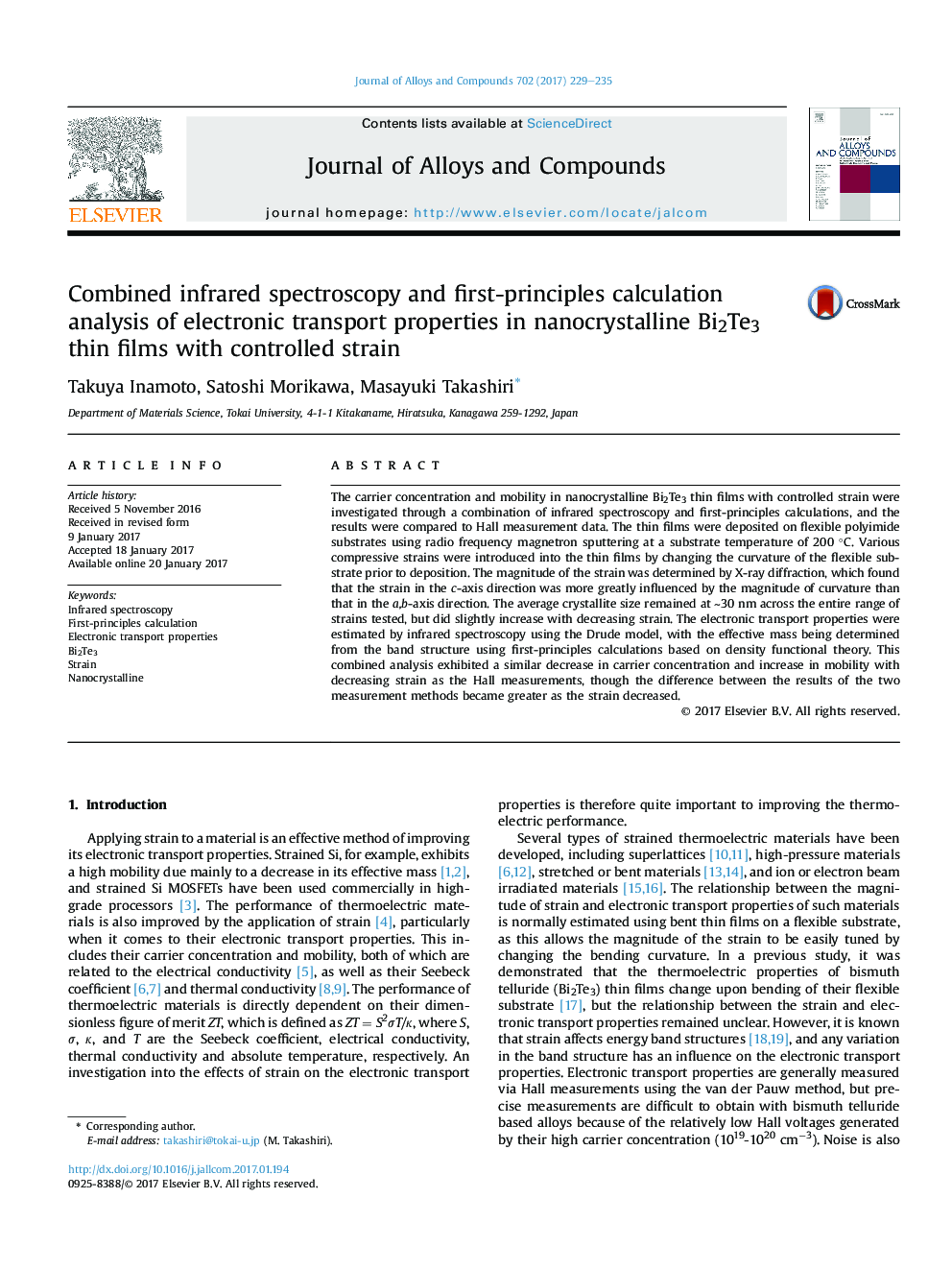| Article ID | Journal | Published Year | Pages | File Type |
|---|---|---|---|---|
| 5459892 | Journal of Alloys and Compounds | 2017 | 7 Pages |
Abstract
The carrier concentration and mobility in nanocrystalline Bi2Te3 thin films with controlled strain were investigated through a combination of infrared spectroscopy and first-principles calculations, and the results were compared to Hall measurement data. The thin films were deposited on flexible polyimide substrates using radio frequency magnetron sputtering at a substrate temperature of 200 °C. Various compressive strains were introduced into the thin films by changing the curvature of the flexible substrate prior to deposition. The magnitude of the strain was determined by X-ray diffraction, which found that the strain in the c-axis direction was more greatly influenced by the magnitude of curvature than that in the a,b-axis direction. The average crystallite size remained at â¼30 nm across the entire range of strains tested, but did slightly increase with decreasing strain. The electronic transport properties were estimated by infrared spectroscopy using the Drude model, with the effective mass being determined from the band structure using first-principles calculations based on density functional theory. This combined analysis exhibited a similar decrease in carrier concentration and increase in mobility with decreasing strain as the Hall measurements, though the difference between the results of the two measurement methods became greater as the strain decreased.
Keywords
Related Topics
Physical Sciences and Engineering
Materials Science
Metals and Alloys
Authors
Takuya Inamoto, Satoshi Morikawa, Masayuki Takashiri,
